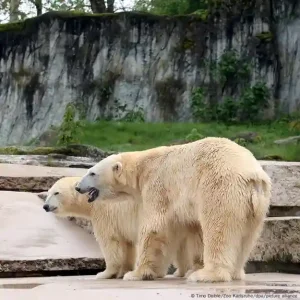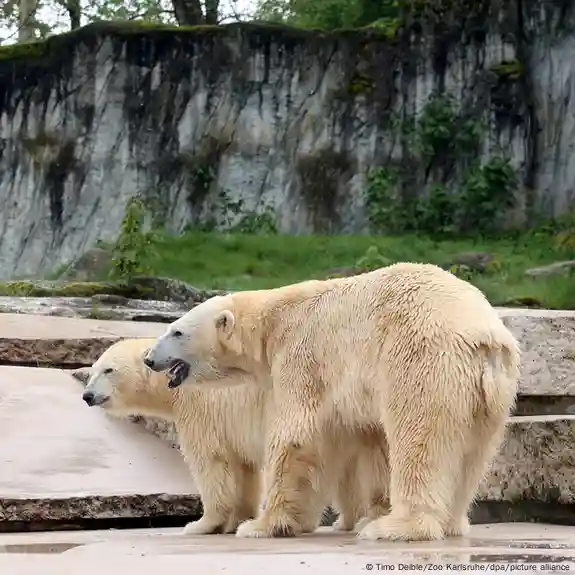Female polar bear Nuka has given birth to two cubs in Karlsruhe Zoo. However, the zoo says, the chances are not particularly good that the cubs will survive after their birth in the outside enclosure.

Karlsruhe Zoo in western Germany welcomed its latest additions to the world on Saturday in the form of two polar bear cubs.
It was mother Nuka’s first pregnancy and, because the cubs were born in the outside enclosure, their chances of survival are seen as particularly low.
What we know so far about the births
Zoo director Matthias Reinschmidt said that this was the first time since 1991 that a polar bear had been born in Karlsruhe, making it clear that breeding between Nuka and the father bear Kap could be successful.
However, he said, newborn polar bears’ chances of survival are already low, and the circumstances of the birth had made them even slimmer.
“Young polar bears have a very high mortality rate even under normal conditions — in the wild as well as in the zoo. If a baby is born in the outdoor enclosure, the probability of survival is extremely low,” Reinschmidt said.
To preserve the small remaining chance, Reinschmidt said the area was cordoned off for zoo visitors, and the windows of the enclosure were whitewashed to provide privacy. “This means that Nuka, who lies in a half-cave that is open at the front, can look after the two small cubs as quietly as possible.”
Nature puts pregnancy on hold
While the mating of the two bears was observed in mid-April, Reinschmidt stressed that fertilized eggs do not implant immediately in polar bears — instead entering a so-called dormancy period.
Implantation of the fetus in the uterus only occurs in the late summer/autumn of the northern hemisphere, followed by a short pregnancy of normally just over two months.
In the Arctic wild, they dig their dens in snowdrifts in late autumn and go into a winter sleep, dropping their body temperatures and metabolic rates.
Normally one or two young animals are born, which are very small, comparable to the size of a guinea pig.
As part of the European Endangered Species Program (EEP), Nuka was brought to Karlsruhe in March from the Pairi Daiza Zoo in the Belgian province of Hainaut. She herself was born in November 2016 at Aalborg Zoo in Denmark.
Kap was born in Moscow in October, 2000, and is considered one of the most genetically valuable polar bears in the EEP. He has only reproduced once in Hamburg.
Polar bears, found in different areas of the Arctic, are considered endangered and the EEP is intended to maintain a reserve population in human care. The population, whose habitat is increasingly threatened by global warming, in the wild is estimated at around 25,000 animals. As of 2022, at least 300 more were living in captivity, according to the Born Free NGO, mainly in zoos and parks.
Credit: DW News


